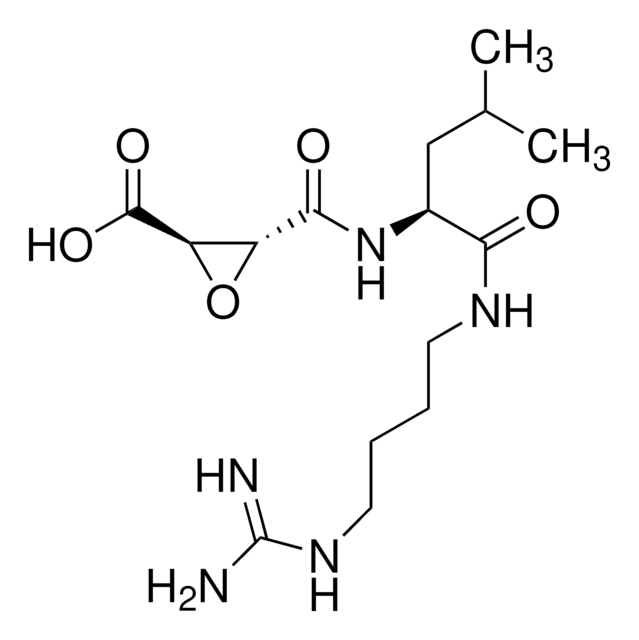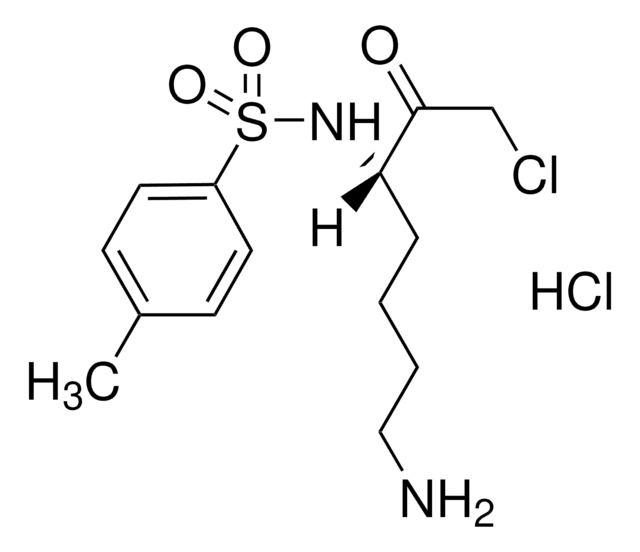D7910
3,4-Dichloroisocoumarin
serine protease inhibitor
Synonym(s):
3,4-DCI, 3,4-Dichloro-2-benzopyran-1-one
About This Item
Recommended Products
Quality Level
assay
≥98% (TLC)
form
powder
solubility
ethyl acetate: 49.00-51.00 mg/mL, clear, colorless to faintly yellow
storage temp.
2-8°C
SMILES string
ClC1=C(Cl)c2ccccc2C(=O)O1
InChI
1S/C9H4Cl2O2/c10-7-5-3-1-2-4-6(5)9(12)13-8(7)11/h1-4H
InChI key
SUGXUUGGLDCZKB-UHFFFAOYSA-N
Looking for similar products? Visit Product Comparison Guide
Application
Other Notes
Quantity
Substrates
signalword
Danger
hcodes
Hazard Classifications
Acute Tox. 3 Oral - Eye Irrit. 2 - Skin Irrit. 2 - STOT SE 3
target_organs
Respiratory system
Storage Class
6.1C - Combustible acute toxic Cat.3 / toxic compounds or compounds which causing chronic effects
wgk_germany
WGK 3
flash_point_f
Not applicable
flash_point_c
Not applicable
ppe
Eyeshields, Faceshields, Gloves, type P2 (EN 143) respirator cartridges
Certificates of Analysis (COA)
Search for Certificates of Analysis (COA) by entering the products Lot/Batch Number. Lot and Batch Numbers can be found on a product’s label following the words ‘Lot’ or ‘Batch’.
Already Own This Product?
Find documentation for the products that you have recently purchased in the Document Library.
Customers Also Viewed
Articles
Enzyme Explorer Product Application Index for Elastase. Leukocyte elastase is a 29KDa serine endoprotease of the Proteinase S1 Family. It exists as a single 238 amino acid-peptide chain with four disulfide bonds.
Papain is a cysteine protease of the peptidase C1 family. Papain consists of a single polypeptide chain with three disulfide bridges and a sulfhydryl group necessary for activity of the enzyme.
Related Content
Trypsin is an enzyme in the serine protease class that consists of a polypeptide chain of 223 amino acid residues. Multiple sources, grades and formulations of trypsin specifically designed for research applications are available.
Our team of scientists has experience in all areas of research including Life Science, Material Science, Chemical Synthesis, Chromatography, Analytical and many others.
Contact Technical Service











